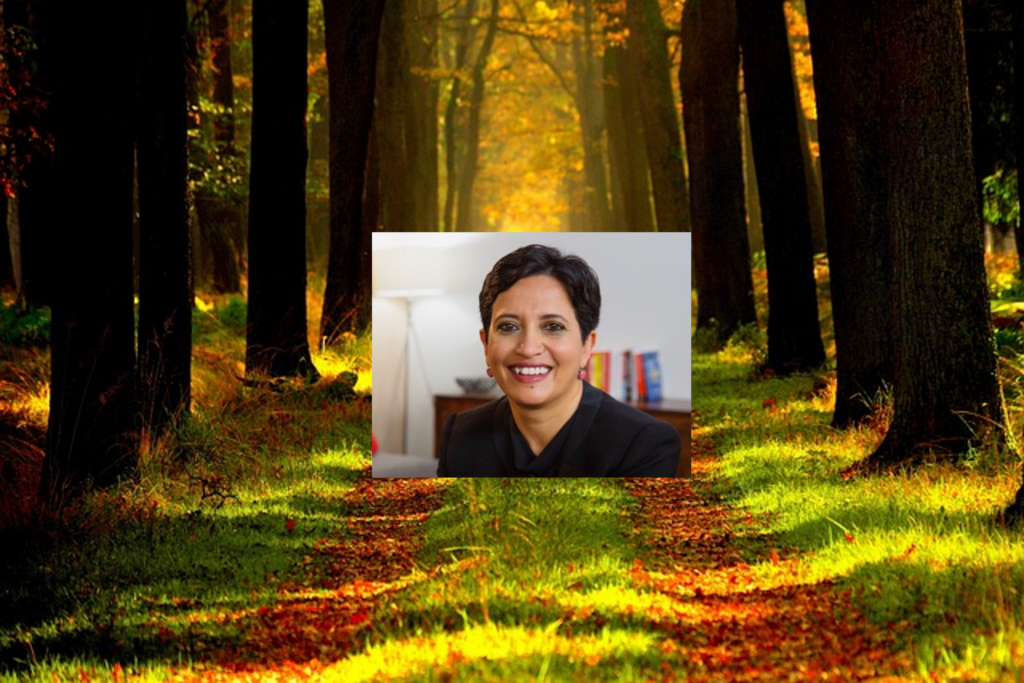Entrepreneur Journeys
The Startup Velocity Question: What Hinders Acceleration in VC Funded Companies?

I have been running 1Mby1M since 2010. I find myself saying to entrepreneurs ad nauseam that VCs want to invest in startups that can go from zero to $100 million in revenue in 5 to 7 years.
Startups that do not have what it takes to achieve velocity should not be venture funded.
Experienced VCs, over time, have developed heuristics to gauge what constitutes a high growth venture investment thesis.
>>>1Mby1M Udemy Courses with Sramana Mitra: Bootstrapping

Over the course of two years, we have released over 70 courses on Udemy with the aim to democratize entrepreneurship education at scale globally. This series of posts aims to help you find the one you need easily and provide you with discount coupons.
>>>From Berlin, Bringing Art Auctions Online: Auctionata CEO Alexander Zacke (Part 1)
If you haven’t already, please study our Bootstrapping Course and Investor Introductions page.
Auctionata is a professional online auction house. We’re about to encounter the online version of Christie’s and Sotheby’s. Read on …
Sramana: Alex, let’s start at the beginning of your story. Where are you from and where were you raised? What are the roots of your entrepreneurial journey?
Alexander Zacke: I was born in Vienna in 1966. I grew up in a family of art dealers and collectors. The family business goes back four generations. I was raised among amazing art collections. I have known art from various cultures my entire life. >>>
Featured Videos
Can 1M/1M Help Me Raise Money?
How Does 1M/1M Democratize Entrepreneurship Education?
How Does 1M/1M Democratize Management Consulting?
When Is The Right Time To Join 1M/1M?
Can 1M/1M Help Me With Business Development?
Can 1M/1M Help Me With Market Sizing?
Can 1M/1M Help Me Validate My Product?
Will I Have Private 1-on-1 Sessions In 1M/1M?
How Does 1M/1M Help Entrepreneurs Connect With Silicon Valley?
Mentoring or Consulting?
Why Does 1M/1M Charge $1000 a Year?
Why Does 1M/1M Partner With Local Organizations?
Why Don\’t Mentoring Networks Work?
Why Is It Important To Study With 1M/1M Now?
Dan Stewart Story
Vikrant Mathur Story
Building Fat Startups: Nasuni CEO Andres Rodriguez (Part 1)
Andres Rodriguez is a rare Latin American entrepreneur in hard core tech. In this era of ‘lean startups’, Andres has built a couple of ‘fat ones’ and in this interview, we discuss what he has learnt, and what he advises other entrepreneurs wrestling with the need to raise money to fund ‘fat startup concepts’.
Sramana Mitra: Andres, where are you from? Where were you born and raised? What circumstances did you grow up in?
Andres Rodriguez: I was born in Venezuela, South America. I graduated from high school there and I came to the States to attend an engineering school.
Bootstrapping Eloqua, Crowdfunding Influitive: Lessons From Mark Organ’s Entrepreneurial Journey (Part 1)
If you haven’t already, please study our Bootstrapping Course and Investor Introductions page.
Raised in an entrepreneurial home, Mark was encouraged to become a doctor or professor and delighted his parents when he went to Northwestern to earn his PhD in neurosciences. In no time he was incubating Eloqua from within Bain and Company during the Internet boom years. This is a unique and rare story of bootstrapping, crowdfunding, struggles and ultimate success.
Sramana: Mark, you have an incredible entrepreneurial journey. Let’s start at the very beginning. Where do you come from?
Mark Organ: I was born near Hamilton in Ontario, Canada. It’s a steal town. My father was an entrepreneur and my mother was an entrepreneur after her homemaker career wound down. My grandfather also came to Canada from Poland very poor and built a nice entrepreneurial career for himself. I was exposed to the idea that it was completely acceptable to be in business for yourself from a very early age. >>>
From The Seedy Underworld of Drugs and Prostitution To Entrepreneurial Success: David Sharpe’s Journey with Empower Network (Part 1)
From drugs, sex, prostitution, David Sharpe has seen it all. Hopelessly lost since his teens, a father at 15, jailed in his twenties, David has found his way back to a healthy life through entrepreneurship. Enjoy reading one of the most unusual stories we’ve done in the eighth year of Entrepreneur Journeys.
Sramana Mitra: Dave, tell us where you’re from. Where were you born and raised – what kind of circumstances?
David Sharpe: My name is Dave Sharpe. I was born in Clearwater, Florida which is right outside of Tampa Bay in 1983. I turned 30 last November 17.
Sramana Mitra: Tell me a bit more about the circumstances. Where did you do school? What did you study? What kind of mental set are you coming from as an entrepreneur? What’s your family background?
David Sharpe: The fascinating thing is I don’t come from an entrepreneurial family. My mom was very involved in a lot of what I did, extracurricular wise. I was a sports player. I was an athlete. By the age of five, I was on a baseball field throwing the baseball around. My parents divorced when I was 2-years-old, but my dad always showed up for my baseball games. Then I had a stepfather, still do. My mom and my stepfather are still married.
How An Entrepreneur Couple Bootstrapped to $5M: RuffleButts CEO Amber Schaub and COO Mark Schaub (Part 1)
RuffleButts is a perfect story on how to bootstrap with a paycheck. Amber Schaub started RuffleButts, a children’s apparel company, in March of 2007, backed by her husband’s full-time job. He later joined in 2010 as the COO after the company had gained traction.
Sramana: Let’s start at the very beginning of each of your stories. I imagine you co-founded the company?
Amber Schaub: I grew up in Louisville, Kentucky. I had the entrepreneurial spirit from a very young age. I used to convince my cousins to help me start lemonade stands, baby sitting clubs, and we even tried to start a grocery delivery business in middle school. My dad is an entrepreneur. My parents were divorced so I watched what my mother had to do as a single mother. She worked a 9 to 5 job for a utility company and had to raise a child on that income. We did not live a lavish lifestyle, but I always had what I needed. >>>
Bootstrapping with Services in India: Srishtisoft CEO Ajay Sharma (Part 1)
If you haven’t already, please study our Bootstrapping Course and Investor Introductions page.
Bootstrapping with service, then building two products, then splitting up the company into two, and finally, scaling a sizable product company – not the kind of stories we hear often from Indian entrepreneurs. This story is a rare window into the journey of a group of entrepreneurs who have achieved amazing feats.
Sramana: Let’s start at the beginning of your story. Where are you from and what kind of family do you come from?
Ajay Sharma: I was brought up in a village in Bihar. My father was a college professor in a rural college. It was actually rather common at that time for professors to pass through rural areas at some point of their career to help bolster those smaller, rural colleges. I attended rural schools until the tenth class. I then moved to another small, sleepy agricultural town for the eleventh and twelfth classes. >>>
Building an Open Source Software Company Around Cassandra, Seed-Funded by RackSpace: Jonathan Ellis and Matt Pfeil, Founders of DataStax (Part 1)
If you haven’t already, please study our Bootstrapping Course and Investor Introductions page.
This is an interesting story of how an open source software company built around Cassandra was incubated by RackSpace and has grown to $5 million in revenue. Founded by engineers Jonathan Ellis and Matt Pfeil, the interview traces not only the successes of their journey but also the mistakes they made in structuring their funding rounds.
Sramana Mitra: Jonathan and Matt, let’s start with both of your backgrounds. Where you were born? Where did you grow up? How did you get together?
Jonathan Ellis: I grew up in New Jersey. I met Matt after I moved to Texas to work for Rackspace. Rackspace hired me to build a scalable database for their internal infrastructure as they started to compete more with companies like Amazon, Google, and the Cloud. In late 2008, I started working on Cassandra. I met Matt Pfeil shortly afterwards as he led the group that was going to be deploying Cassandra internally at Rackspace.
Building a Retail Business in India: Manish Sharma, CEO of Printo (Part 1)
If you haven’t already, please study our Bootstrapping Course and Investor Introductions page.
Manish Sharma is the co-founder and CEO of Printo, a Bangalore, India-based company specializing in high quality printing. Manish is a serial entrepreneur who began his career in 1995 as an early member of the startup team at Rediff.com. He went on to be the co-founder of DBS Internet Services, co-founder at New Economy Venture Group, and Global Director of Solutions for Pipal Software. He co-founded Printo in April of 2005. He is a graduate of the University of Oxford and Bombay University.
Sramana: Manish, let’s start with the beginning of your story. Where are you from? What is the backdrop to your entrepreneurial career?
Manish Sharma: I am from Bombay. I went to school there and was raised in a typical middle class family. My father is an engineer. I am a first generation entrepreneur. My father does not have business in his lineage. His father and grandfather were both engineers. >>>
Bootstrapping an App to $10 Million in Revenue: Christophe Bach, CEO of TextMe (Part 1)
If you haven’t already, please study our Bootstrapping Course and Investor Introductions page.
This is a wonderful story of a self-financed company that has built itself up to $10 million in profitable revenue. Led by Christophe Bach, an experienced and successful serial entrepreneur, it’s a text-book case study of effective bootstrapping.
Sramana: Christophe, to start, tell me your back story. Where are you from, where were you born?
Christophe: I am the Co-Founder and CEO of TextMe and prior to TextMe, I co-founded three companies in Europe. I was born and raised in Paris, France. I have been living between Paris and San Francisco for the last 15 years.
Sramana: Did you do college, university in Paris as well?
Christophe: Yes, I did.
Sramana: What is your background? Is it a technical background or business background?
Christophe: I went to an engineering school. They now call it Polytechnique.
Sramana: What did you do after polytechnique?
Bootstrapped Journey of a Child Entrepreneur in India: Varun Shoor, CEO of Kayako (Part 1)
If you haven’t already, please study our Bootstrapping Course and Investor Introductions page.
[Also check out my Entrepreneur Journeys book, Seed India – How To Navigate The Seed Capital Gap in India]
Varun Shoor is the founder and CEO of Kayako, a company offering advanced helpdesk management software. Varun steers the overall direction of the company and as customer experience fanatic and lead product architect, takes an active role in the design and development of Kayako. One of Varun’s greatest passions is design. Applying modern, consumer-like design to stuffy business helpdesk software was Varun’s brainchild, and with it he founded Kayako in 2001.
Sramana: Varun, let’s start with your personal story. Where are you from? What is the backstory to Kayako?
Varun Shoor: I was born in Jalandhar, a city in Punjab. I have had no formal education. I started Kayako when I was 17. My family background is industrial by nature. My father is into manufacturing, primary tools such as hammers.
Sramana: Does he work for himself?
Varun Shoor: He is also an entrepreneur. He grew his business into what it is today. He works for himself and he owns his factory. >>>
